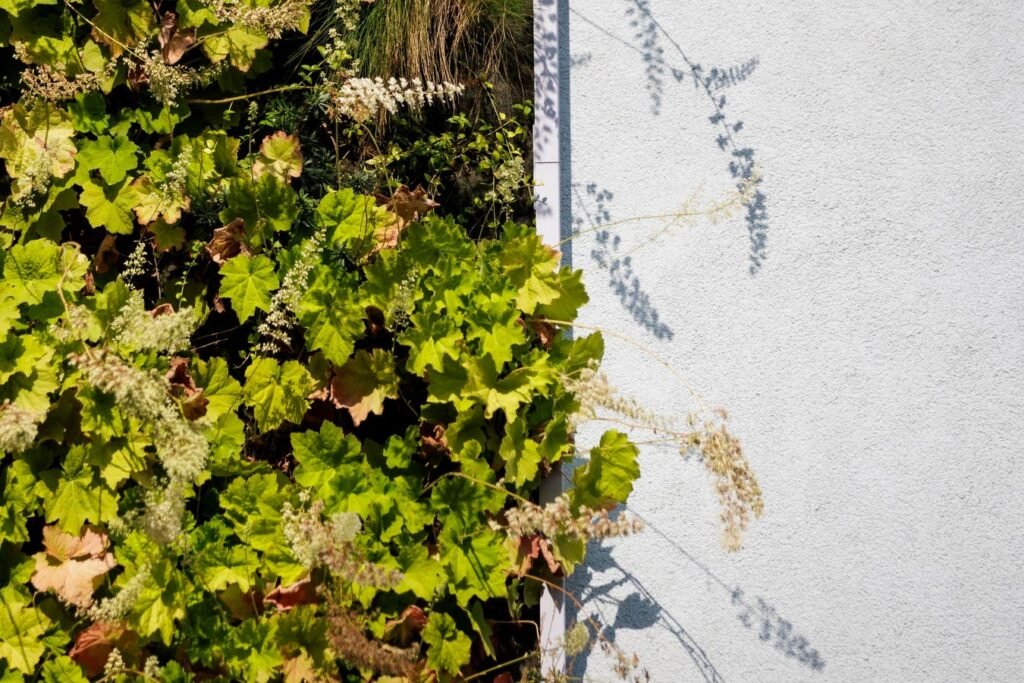BERLIN, GERMANY: The facade of a residential building in Berlin Kreuzberg is planted as a Vertical … More
It’s not just your thoughts that shape your mind, but also your surroundings. Research indicates that the more natural these surroundings are, the better your brain functions.
Welcome to the era of biophilic design—a movement in architecture and psychology that is reshaping how we work, live, and experience the world around us. Rooted in our inherent connection to nature, biophilic design incorporates elements like natural light, organic materials, greenery, and water features into our built environments. These elements go beyond aesthetics, impacting our neurological well-being.
From Google campuses with nature-inspired interiors to hospitals integrating indoor gardens for faster recovery, biophilic environments are no longer just visually appealing but essential for our well-being. As individuals face chronic stress and overstimulation, this return to nature offers a path to cognitive balance.
A Neural Return To Nature
The concept of biophilia, popularized by Harvard biologist Edward O. Wilson, describes our intrinsic desire to connect with nature. Recent research is exploring how this innate trait influences modern spaces, revealing profound effects.
Studies published in journals like Frontiers in Psychology and Journal of Environmental Psychology have shown that even minimal exposure to natural elements can reduce stress levels, enhance cognitive performance, and improve mood. In work environments, these benefits translate into increased focus, quicker stress recovery, and higher productivity, among other advantages.
This is especially important as people now spend over 90% of their time indoors, according to the Environmental Protection Agency. With concerns about digital burnout and mental health on the rise, the built environment must actively support human function at a neurological level.
Recent brain imaging studies have further confirmed these effects. A 2023 MRI study revealed that exposure to natural scenes, even virtual ones, can increase activity in the prefrontal cortex, responsible for decision-making and emotional regulation. Biophilic inputs have the power to positively impact brain function, promoting clarity, calmness, and control.
Why The Brain Responds To Biophilic Cues
Our brains evolved in natural environments filled with stimuli like rustling leaves and flowing water. These stimuli activate the parasympathetic nervous system, signaling safety and promoting a state of restoration. In contrast, urban environments often overload the brain with stress-inducing factors like noise and artificial lighting.
Design elements inspired by nature, such as fractal patterns and organic textures, resonate with the brain’s natural wiring. We are biologically inclined to thrive in environments mirroring the natural world. These elements encourage “soft fascination,” a gentle attention that allows the brain to rest without disengaging.
In her book Well at Work: Creating Wellbeing in any Workspace (2023), Dr. Esther Sternberg, a pioneer in design-emotion research, explains how the absence of nature in our surroundings burdens our cognitive and emotional resources. Sternberg’s work demonstrates how biophilic design helps us reclaim the calming effects of nature in dense urban or workplace settings.
Through her research, Sternberg has played a key role in incorporating evidence-based design into healthcare and corporate environments, highlighting the inseparable link between healing and high performance with the spaces we inhabit.
Neuroscientists now view the nature-brain connection as a co-evolutionary relationship. Just as we shape our environments, they shape us, thanks to the brain’s neuroplasticity—the ability to rewire itself based on experience.
Our brains are not static but adaptive, continuously molded by external stimuli. With the right biophilic cues, we can intentionally design spaces that shift our baseline from overstimulated to attuned.
From Wellness Trend To Design Imperative
Global companies and institutions are recognizing the importance of biophilic design. Tech campuses, hospitals, schools, and luxury hotels are integrating nature into their design frameworks. Architects collaborate with neuroscientists, and interior designers study circadian rhythms. What was once a trend is now a fundamental aspect of human-centered design, with nature serving as the primary inspiration.
In Singapore, skyscrapers are enveloped in vertical forests, a concept introduced by architect Stefano Boeri. Schools in Denmark are redesigned with sensory gardens and outdoor learning pods to support child development. In New York, biophilic coworking spaces like The Assemblage and NeueHouse are popular among entrepreneurs seeking conducive work environments.
This shift is not only driven by well-being metrics but also economic ones. A Human Spaces report across 16 countries found that employees in natural environments reported higher well-being levels and increased productivity. This advantage is crucial for talent retention, creativity, and overall performance.
As businesses rethink post-pandemic workplaces, biophilic design is central to humanizing office culture. It’s more than just adding plants; it’s about creating ecosystems that align with biological rhythms, nurture emotional intelligence, and restore sensory equilibrium. The result is a workforce that is more engaged, empathetic, and mentally agile.
Designing For a Neuroplastic Future
Biophilic design is essential for neuroplastic living. By creating environments that activate the brain’s relaxation and reward centers, we establish pathways for calmness, focus, and resilience. The space around us begins to shape the space within us.
Environments that consistently promote calmness and attentiveness can lead to long-term changes in perception, emotion, and behavior. Design goes beyond functionality to become transformative, influencing blood pressure, attention span, and social interactions.
As we envision the future of work and wellness, one thing is clear: nature remains our most profound designer. We just need to relearn how to listen.


